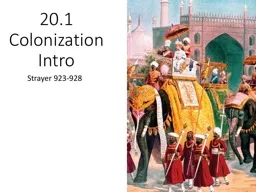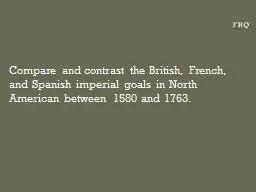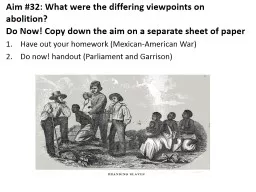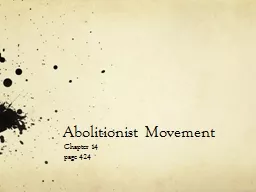PPT-20.1 Colonization Intro
Author : lois-ondreau | Published Date : 2017-04-12
Strayer 923928 Opening Europeans didnt speak English to African Natives Didnt want to be seen as equals in language Keep a distance ENG FR GER BEL POR RUS US all
Presentation Embed Code
Download Presentation
Download Presentation The PPT/PDF document "20.1 Colonization Intro" is the property of its rightful owner. Permission is granted to download and print the materials on this website for personal, non-commercial use only, and to display it on your personal computer provided you do not modify the materials and that you retain all copyright notices contained in the materials. By downloading content from our website, you accept the terms of this agreement.
20.1 Colonization Intro: Transcript
Download Rules Of Document
"20.1 Colonization Intro"The content belongs to its owner. You may download and print it for personal use, without modification, and keep all copyright notices. By downloading, you agree to these terms.
Related Documents













